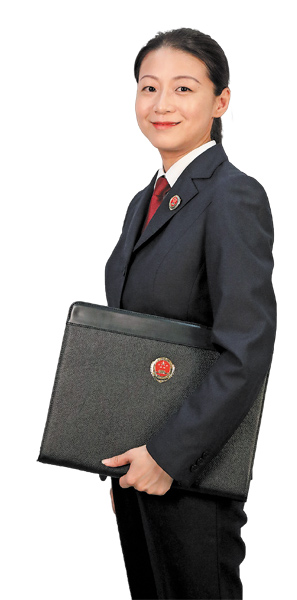

One key for one lock
When dealing with juvenile delinquency cases, in addition to focusing on minors' behavior, Gu is also concerned about people; in addition to focusing on their past, she is also concerned about their future.
Based on conviction and sentencing, Gu investigates each child's growth experience, family background, and reasons for involvement and carefully analyzes one's need for correction.
"When we are sitting in front of a minor, for him or her it could be the darkest moment of his or her life," Gu says. "At least we should let them feel that they are not abandoned by the world in the process."
The phrase one key for one lock is her approach, to set individualized educational correction programs for juvenile delinquents to guide them.
"We can't just see case files but not the children. We should be tolerant but not indulgent to them and the key is the effectiveness of educational correction," Gu says.
In 2013, Gu dealt with an affray case involving over 20 minors. She noticed several older teenagers were due to take the college entrance exam in a few months, and once they were sentenced by the court, their college life would be replaced by time in prison.
Gu found that some minors in the brawl were not armed and did not directly cause physical injury to others, and they played a small role in the joint crime and admitted to it. If they could be conditionally not prosecuted according to the law, it would help them return to normal life as soon as possible.
Gu worked around the clock, doing door-to-door field research on the causes of the crimes the minors were involved in and their family situations, and analyzed the basis of correction, and reached statements of understanding with the victims, as well as developed personalized correctional plans for the juveniles.
"The plan for each juvenile is quite detailed, as we ask one juvenile delinquent to get to the youth activity center within 40 minutes after school, and there is a social worker waiting for him to do his homework and at 7:30 pm, his mother can take him home," Gu says.
After a year and half on this case, all the juniors involved separately completed their education and correction either in correctional institutions for juvenile offenders or in communities or schools.
Two of them have been admitted to local universities, seven have returned to school, and the rest have been employed.
The personalized correction plan gradually developed into a positive youth development program in Shanghai which still accepts new juvenile delinquents. According to Gu, some of the minors who used to be involved in the program have now been volunteering on weekends.
The case was selected among "top 10 cases of juvenile delinquency prevention in Shanghai" and it was a trial run to not prosecute juveniles with certain conditions after this rule of law came into effect in 2013.
According to the Supreme People's Procuratorate, in the first half of this year, 36 percent of juveniles brought into the legal system were not prosecuted with certain conditions.